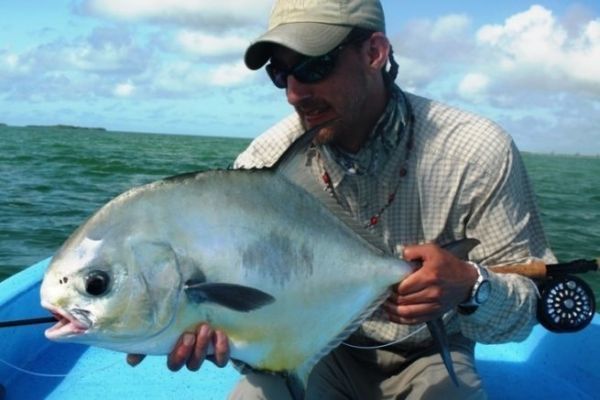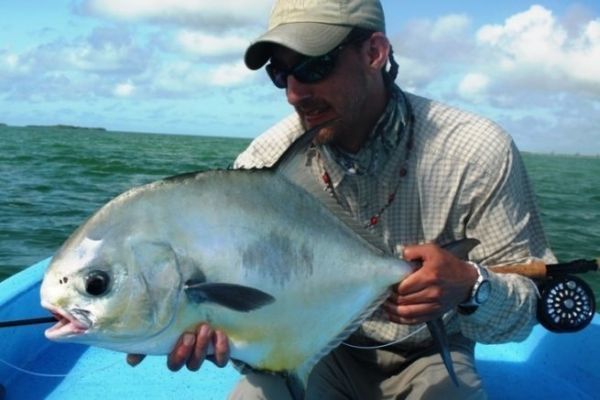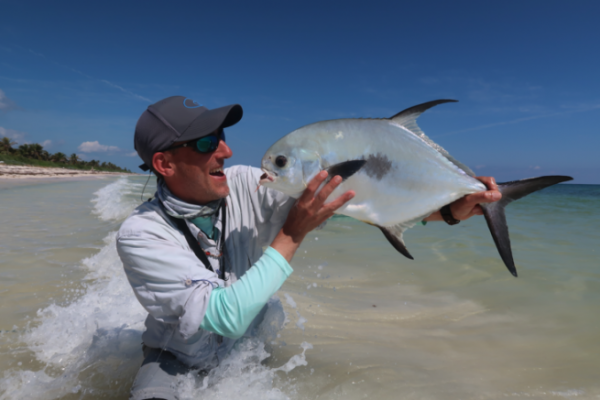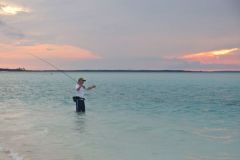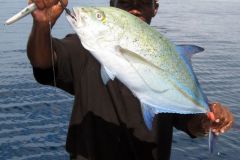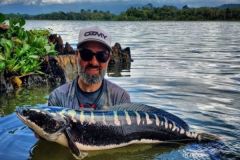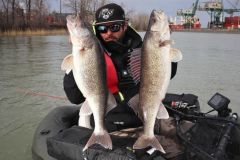Permits, the Grail of flats
Permit, trachinotus falcatus is an oval-shaped fish of the jack family with highly developed, pointed, dark fins (caudal and dorsal) that feeds mainly on crabs and shrimps on deep flats.
It can live for around twenty years and weighs between 5 and 10 kg on average, but can reach over 20 kg on certain destinations. The world record is 60 pounds (nearly 30 kg).
A subspecies, the Indo-Pacific permit, lives in the Indian Ocean, mainly in the Seychelles and northwestern Australia. It is generally smaller in size and yellowish in color, due to the environment in which it lives. Nevertheless, they adopt the same behavior as their Atlantic cousin, feeding on crabs and shrimps on coral reefs, flats or in the Seychelles lagoons, where they return to feed.
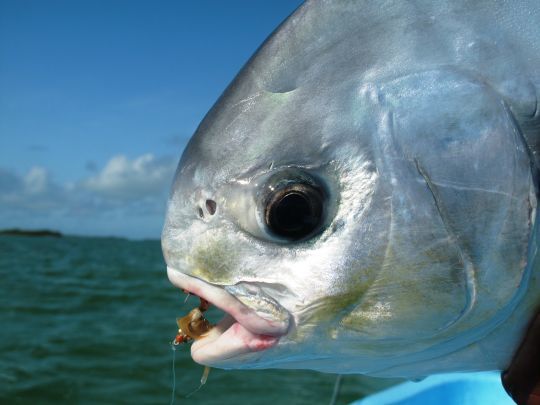
Permit fishing
The Permit lives mainly at depth, between 10 and 50 meters, but forages on the shallows, edges and flats, which are deeper than bonefish.
It can be fished either from a boat, which allows you to cover a lot of ground, especially for fast-moving fish (cruising), or by wadding for approaches to actively feeding fish.
We generally use a 9-foot fast-action sea rod of power 9 to 10, depending on conditions, fitted with a Rio Permit-type off-centre floating line (WF), extended by a long leader ending in a fluorocarbon tip of 16 to 25/30 lbs or more (Rio Permit saltwater tippet).
It's a very powerful fish and you can't fish it with too thick a line as with other species of trevally, which feed by hunting in schools of small fish and are less observant and much more aggressive. It's a much finer approach because of their legendary mistrust and the difficulty of getting them interested with our flies. Thanks to his large eye, he must have very good vision, enabling him to detect the slightest anomaly. But nobody really knows.
As a result, it's very common to get rejections, even if you've presented your fly well, which most often imitates a crab or shrimp mounted on sea hooks in sizes 2, 1 or even larger. Tan and olive are the colors most often used for Atlantic permit, while white seems to be the dominant color for Indo Pacific.
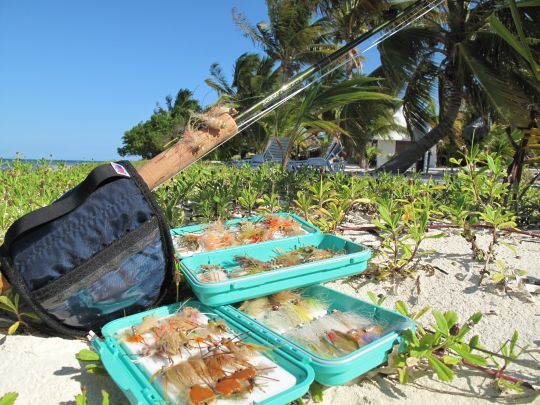
His fishing consists of prospecting long flats in search of fish roaming in small groups, and isolated fish, often of larger size. Either they swim fast, in which case you need to intercept their trajectory by casting well upstream (several meters) of the fish movement and in front of the lead fish (the one leading the troop), or they feed more actively on the bottom, revealing their caudal and sometimes dorsal fins (tailing). In this case, you need to cast much closer, with precision and delicacy, to bring our imitation into his field of vision, restricted by the fact that he is concentrating on prey on the bottom.
These are very different actions, and the behavior of the fish and its speed of movement, as well as the depth of the position, will dictate what the angler should do to increase his chances of success.
The action is magnificent, as watching these palometas (permit in Spanish) feed with their heads tilted down and tails in the air is always a great moment. However, when a permit is within casting range and regularly flicks its tail out of the water, the angler has to be both precise and quick. Casting is never easy, as it's often windy, the fish are constantly on the move, and are very wary. The angler has to keep his cool and concentrate to make a perfect cast, otherwise he'll spook the fish.
The fight with a permit is very violent and muscular, as are the powerful and fast jacks. Their endurance is astonishing. A 5 kg fish can give you 50 to 100 m of backing in a single stroke, so you can imagine the biggest specimens!
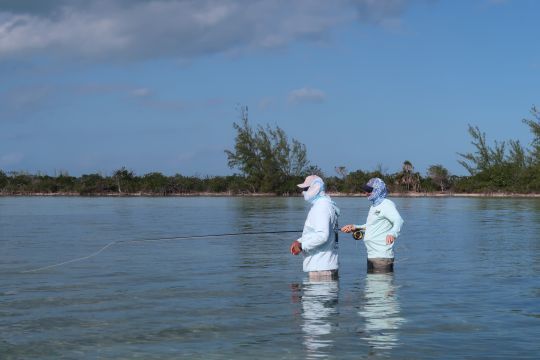
The best destinations for permit fishing
Permit can be fished at many Caribbean destinations, where it finds its preferred habitat of sandy-mud flats, coral reefs and turtle grasses to forage.
Mexico is undoubtedly one of the best destinations, where you can encounter a huge number of fish of all sizes during your week, whether in Assumption Bay, Espiritu Santo or Chetumal. Then there's Belize, bordering southern Mexico, where habitats and populations are similar.
Cuba has many areas classified as marine reserves, where fishing is authorized but regulated and controlled, and several destinations are excellent for permit fishing, including Cayo Cruz and Cayo Largo. It can be found just about everywhere in this destination.
Famous Atlantic permit destinations :
- Belize
- Mexico
- Florida
- Cuba
Famous destinations for Indo-Pacific permits:
- Seychelles (Farquhar, Cosmolédo, Alphonse Islande)
- Exmouth, Australia.
